© 2025 ALLCITY Network Inc.
All rights reserved.

“There are rich teams, and there are poor teams. Then there’s 50 feet of crap. And then there’s us.”
Those are the iconic words of Oakland Athletics general manager Billy Beane in “Moneyball,” discussing the state of his cash-strapped franchise in the early 2000s.
The Diamondbacks’ situation, granted, is less dire: Their final 2021 payroll ranked a reasonable 21st in baseball. But the team still spends relatively little on the open market, with mixed results in free agency since general manager Mike Hazen took over in 2016.
The trade market is a more level playing field. The most valuable assets are young players with affordable team control. In theory, every team has equal access to that type of talent.
Much like free agency, the Diamondbacks have had their fair share of successes in the trade market since Hazen’s regime began. But they’ve also had several missteps along the way.
Let’s look back on the biggest trades of the Hazen era, beginning with the one that unexpectedly brought in the team’s best player.
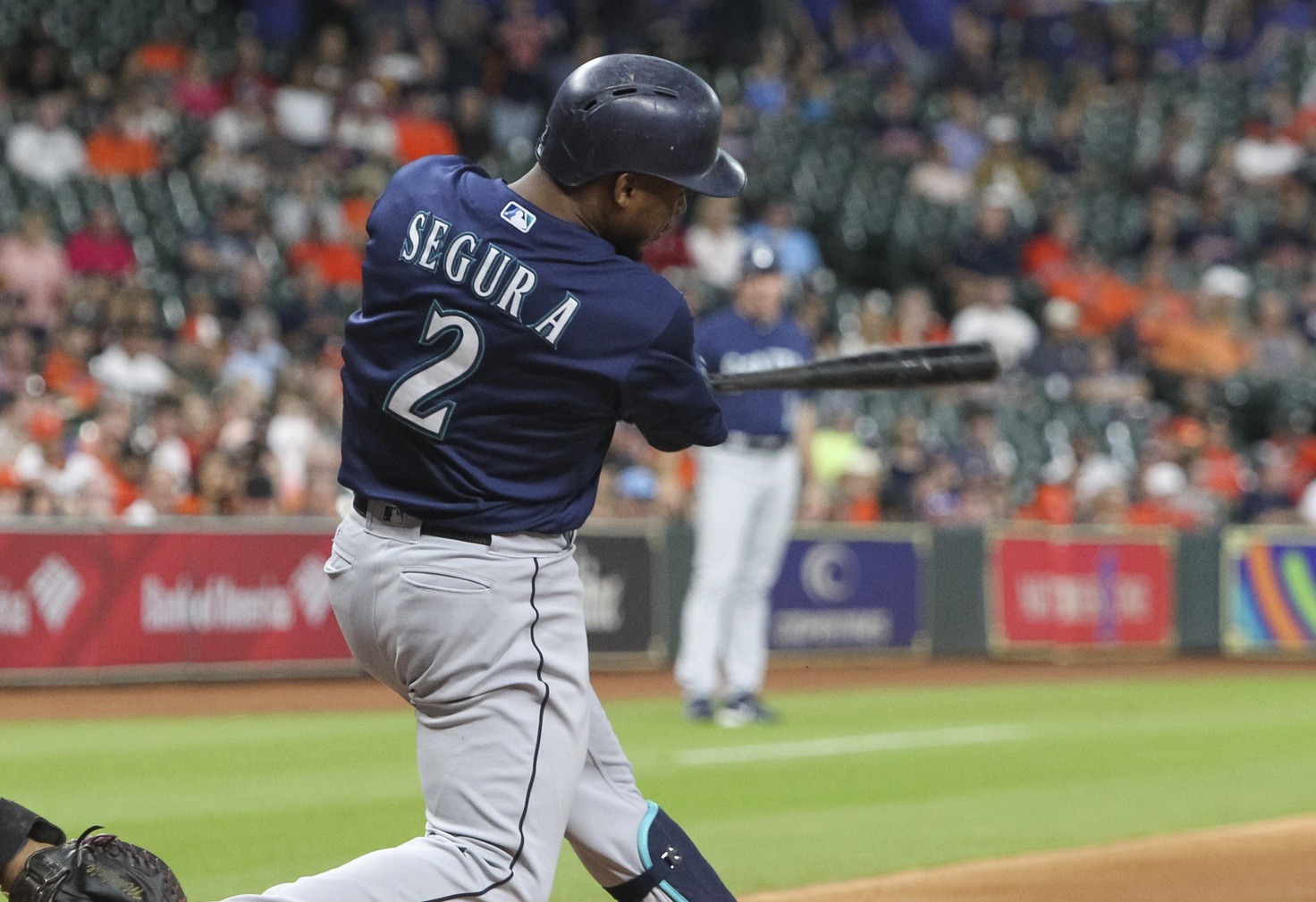
The Taijuan Walker-Jean Segura Trade
Acquired INF/OF Ketel Marte and RHP Taijuan Walker from Mariners for INF Jean Segura, OF Mitch Haniger and LHP Zac Curtis
Hazen’s first trade was arguably his biggest ever. Marte and Haniger immediately jump off the page, but at the time, this was all about Segura and Walker.
Segura was coming off a breakout 2016 season that saw him slash .319/.368/.499 with 20 homers, 64 RBIs and a league-leading 203 hits. In two seasons with the Mariners, Segura came back to earth but was still one of baseball’s best middle infielders.
Walker’s 2016 numbers were less impressive, but still respectable. He went 8-11 with a 4.22 ERA, 1.24 WHIP, 20.8 percent strikeout rate and 6.5 percent walk rate. But if there’s anything we’ve learned about Hazen over the years, it’s that he loves young, controllable starting pitching. As a 24-year-old with four years of team control remaining, Walker was exactly that.
After posting a strong 3.49 ERA in 28 starts in 2017, Walker needed Tommy John surgery in 2018. He made one appearance in 2019 before the team surprisingly non-tendered him.
While the D-backs got the best player in the trade (more on that in a moment), Haniger has flourished in Seattle, posting 10.9 fWAR with a batting line of .265/.340/.486. In 2021, he belted 39 homers and drove in 100 runs.
That leads us to Marte, who is arguably the most unexpected superstar in Diamondbacks history. After a promising but modest start to his career in Seattle, Marte has taken off in Arizona with 13.5 fWAR and a slash line of .295/.358/.495. Had the team not extended him prior to the 2018 season, he would have reached free agency this winter. Now, the team controls him through 2024.
Ultimately, both sides did well. But the D-backs would do this deal again every day of the week and twice on Sunday.
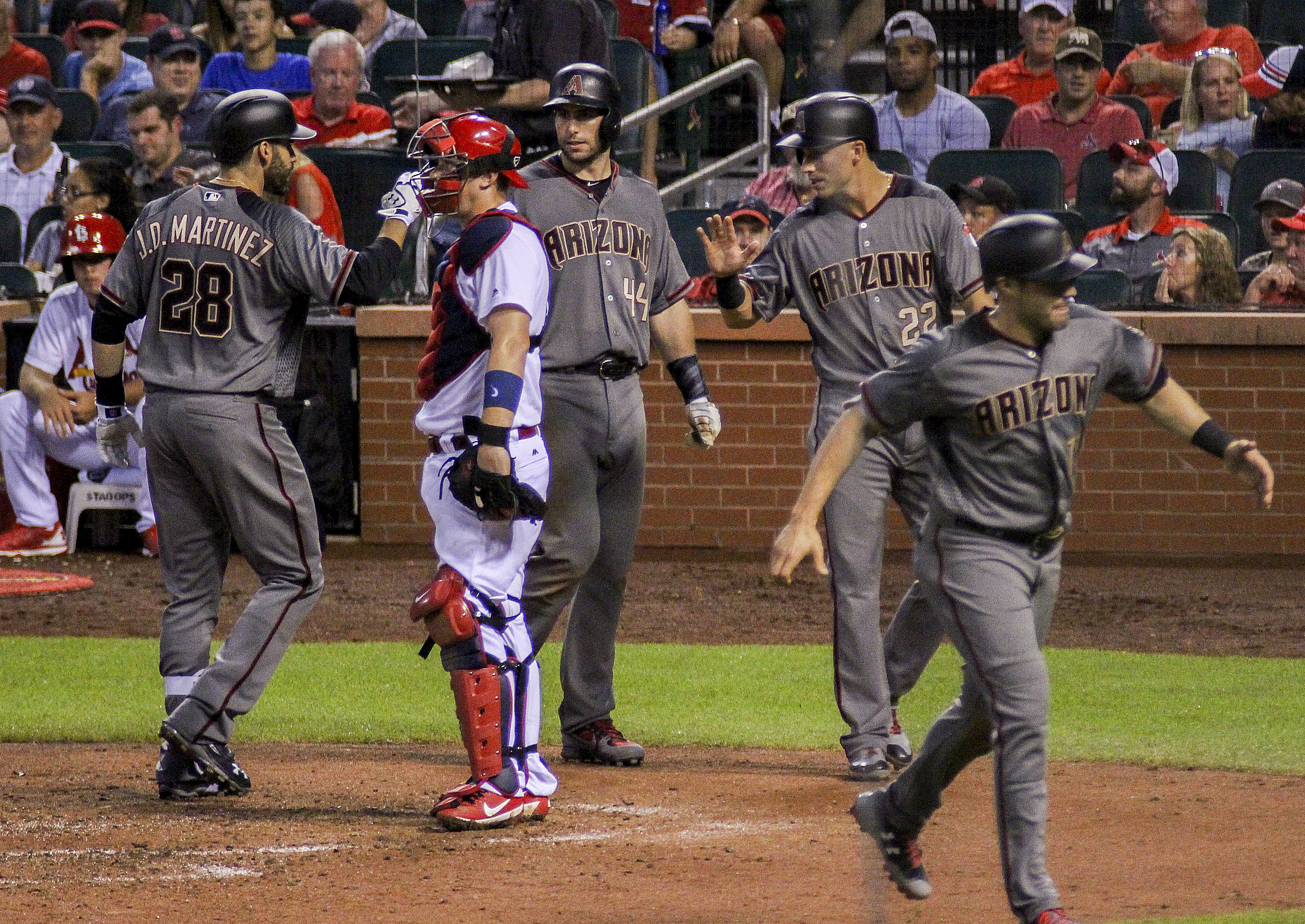
Just Dingers
Acquired OF J.D. Martinez from Tigers for INF Dawel Lugo, INF Sergio Alcantara, and INF Jose King
It is uncommon for a midseason rental to be a GM’s best work, but that may be the case for Hazen. Martinez slashed .302/.366/.741 with 29 homers and 65 RBIs in 62 games for the D-backs in 2017. For reference, that is a pace of 76 home runs per 162 games.
The Tigers have little to show for it. Lugo, the biggest name in the deal, reached the majors at age 23, but his career slash line of .236/.270/.358 leaves something to be desired.
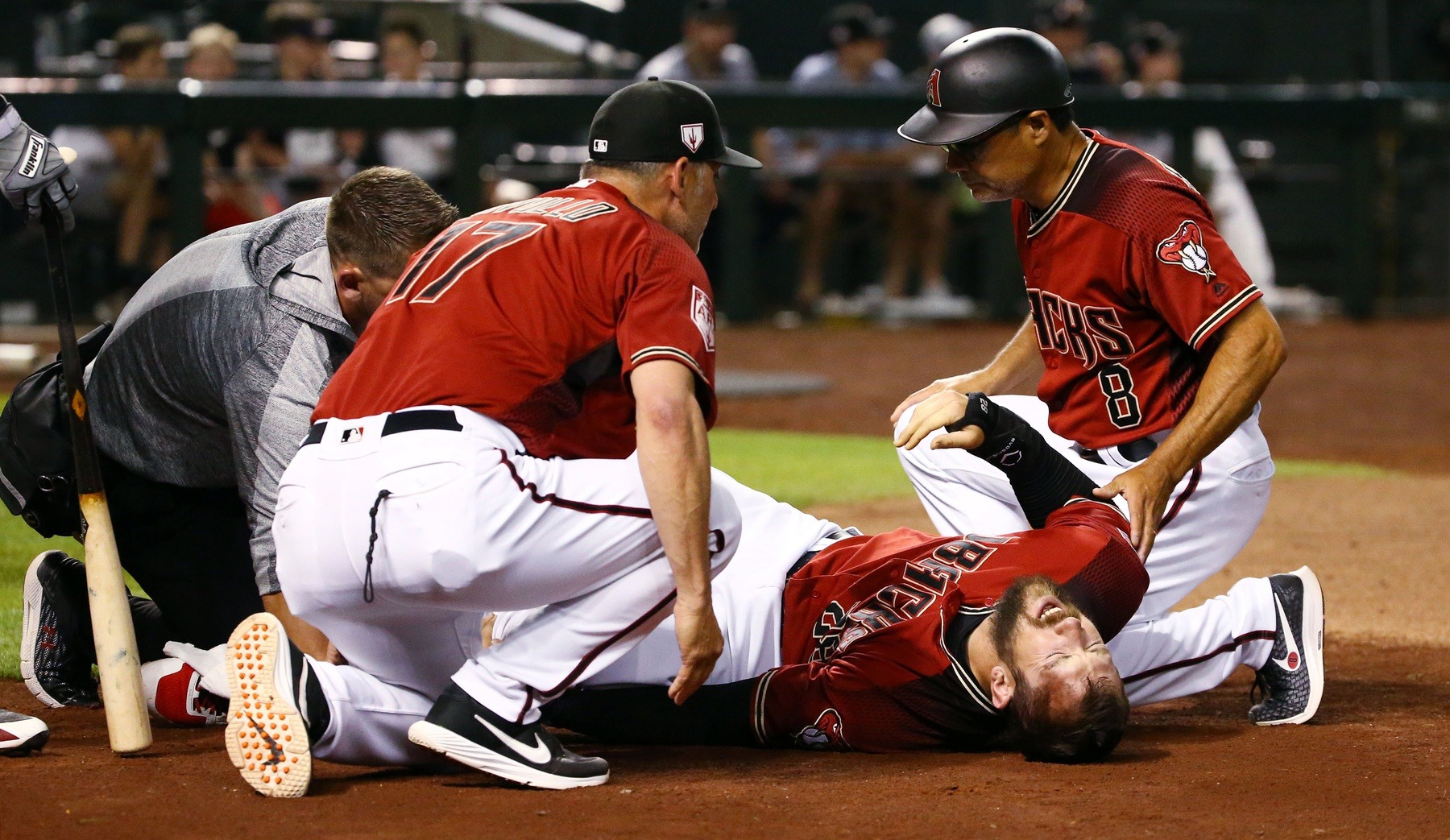
Three-team Madness
Acquired OF Steven Souza and RHP Taylor Widener in three-team trade that sent LHP Anthony Banda, RHP Sam McWilliams and LHP Colin Poche to Rays and INF/OF Brandon Drury to Yankees (Rays also received INF Nick Solak from Yankees)
After losing Martinez in free agency in winter of 2017, the D-backs had an opening in the outfield. Acquiring Souza from the Rays was supposed to be the answer.
Despite having three years left on his contract when the trade happened, Souza ultimately played just 72 games for the D-backs. He wasn’t particularly good, slashing .220/.309/.369 with five homers and 29 RBIs in 2018.
The team hoped for a bounceback the following year, but Souza tore both his ACL and LCL in an exhibition game just before the start of the season. The D-backs non-tendered him when the season ended.
Widener, meanwhile, moved up the ranks on D-backs top prospect lists and made his debut in 2020. In 35 outings (13 starts), Widener has a 4.38 ERA and 1.42 WHIP over 90.1 innings with 95 strikeouts and 49 walks. He’s had an issue with the long-ball, surrendering 19 homers. Despite being highly-touted as a possible mid-rotation starter, Widener appears best-served as a middle reliever.
While Souza and Widener have underwhelmed, the story is similar for the players the D-backs traded. Formerly the team’s top pitching prospect, Banda underwent Tommy John surgery in Tampa less than six months after the trade. Despite reaching the majors in 2017, he still has under 100 big-league innings to his name. Most recently, he posted a 4.28 ERA and 1.55 WHIP for the Pirates and Mets as a reliever in 2021.
Once viewed as a strong breakout candidate, Drury’s career took an immediate turn for the worse after the trade. From 2018 to 2020, Drury slashed .205/.254/.346 in 582 plate appearances with the Yankees and Blue Jays. He was better in 2021, batting .274/.307/.476 primarily in a bench role for the Mets.
The most intriguing name in this trade might be Poche, a left-handed reliever who debuted with the Rays in 2019. Poche posted a 4.70 ERA over 51.2 innings that year, but an impressive 72:19 K/BB ratio suggests a possible turnaround. He underwent Tommy John surgery in 2020 and didn’t pitch in 2021, but he should return in 2022.
If it’s possible to declare a winner of this trade, it’s not the D-backs.

El de la Pica
Acquired INF Eduardo Escobar from Twins for RHP Jhoan Duran, OF Ernie De La Trinidad and OF Gabriel Maciel
With Jake Lamb struggling and/or hurt throughout most of 2018, the D-backs needed a third baseman at the trade deadline. They found one in Escobar, sending a trio of minor leaguers to the Twins in return.
Escobar had only half a season left on his deal when the D-backs acquired him. In 54 games through the end of the season, he slashed .268/.327/.444 with eight homers and 21 RBIs.
Shortly after the season ended, the D-backs extended him for three more seasons. Throughout his D-backs career, Escobar slashed .254/.309/.468 with a 98 wRC+. He was his team’s lone All-Star representative in 2021.
On the Twins’ side of the deal, Duran stands out the most. Ranked as the Twins’ fifth best prospect on MLB Pipeline, the 23-year-old is on track to become a quality major league starter. In exchange for a half-year rental, the Twins appear to have done very well.
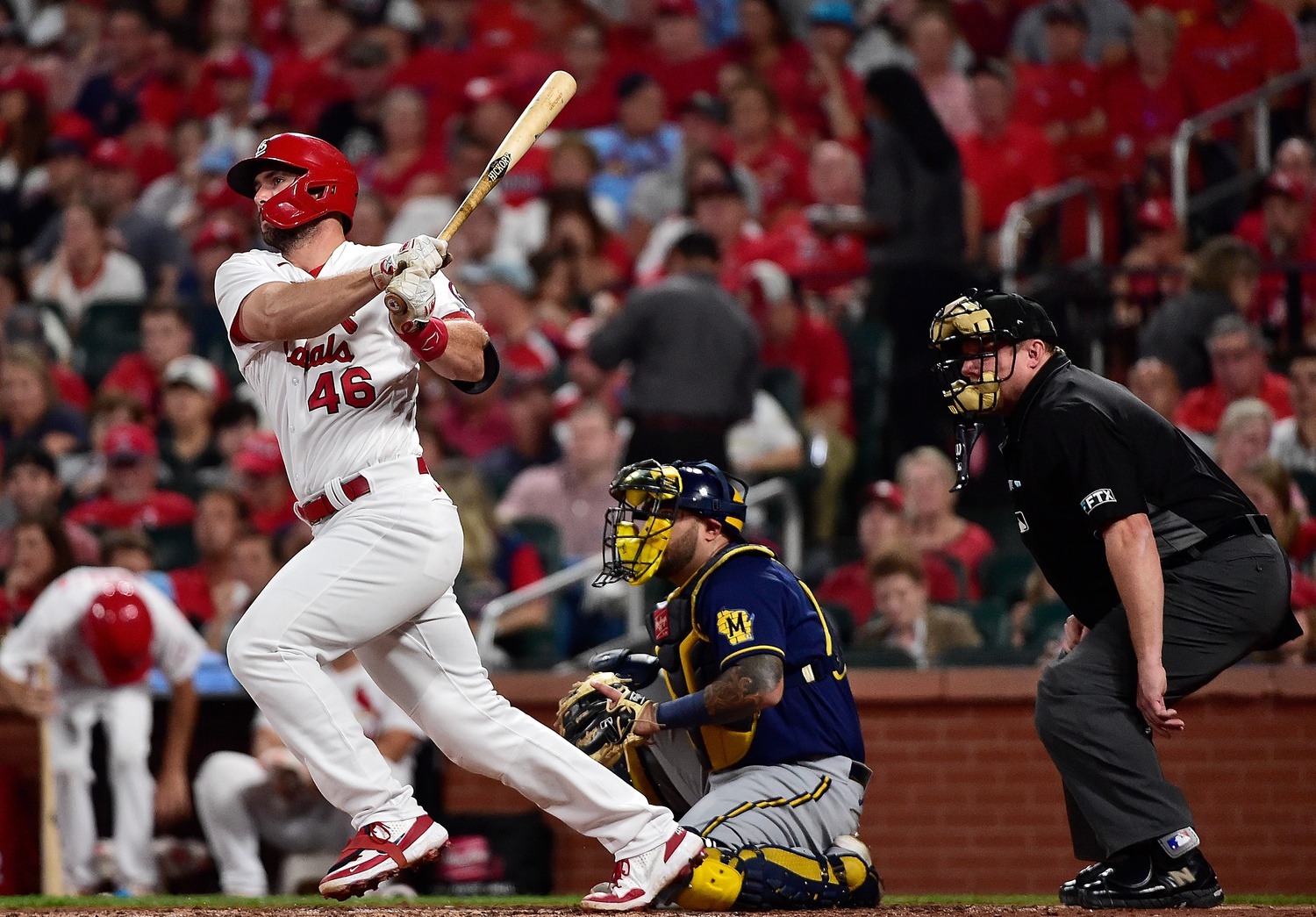
Goldy, Goldy, Gone
Acquired RHP Luke Weaver, C Carson Kelly, minor league IF Andy Young, and a Competitive Balance Round B pick in the 2019 draft from the Cardinals for 1B Paul Goldschmidt
For my full analysis of the Goldschmidt trade, check out this piece from several months ago. Here’s the CliffNotes version.
Trading the franchise player almost never looks good, but it actually did for a while. Christian Walker essentially matched Goldy’s performance in 2019, and both Kelly and Weaver impressed in their first seasons in Arizona. Unfortunately, the tide has turned since.
Goldy slashed .294/.365/.514 in 2021 for St. Louis, and he now owns a .279/.363/.484 batting line since the deal. While that’s not on par with Goldy’s production in Arizona, he trails only Freddie Freeman in fWAR among first basemen since the trade.
Despite streakiness and a heavy platoon split, Kelly has done more with the bat than many thought he ever would, with a .238/.333/.435 slash with 36 homers in 847 plate appearances as a Diamondback. He’s essentially a league-average hitter who plays solid defense behind the plate. That’s quite valuable, particularly given the scarcity of competent hitters at the catching position around the league.
Weaver, meanwhile, has had a great season, a poor season and a just-okay season since the deal went down, accumulating a total of 3.0 fWAR as an essentially league-average starting pitcher. Unfortunately, the trend that stands out most is injuries. He’s never thrown more than 65.2 innings in a season since the trade. The D-backs have him under contract for two more seasons.
While the D-backs recently lost Young in the minor league rule 5 draft, they drafted Dominic Fletcher with the competitive balance pick they received in the deal. MLB Pipeline pegs Fletcher as the team’s 19th best prospect.
Ultimately, Hazen might not have knocked this deal out of the park, but he did better than it looks. Remember: Goldy only had one year left on his contract when the trade happened. That season was the worst of his career.
There’s an argument to be made they should have re-signed him instead of trading him, but that’s another conversation.
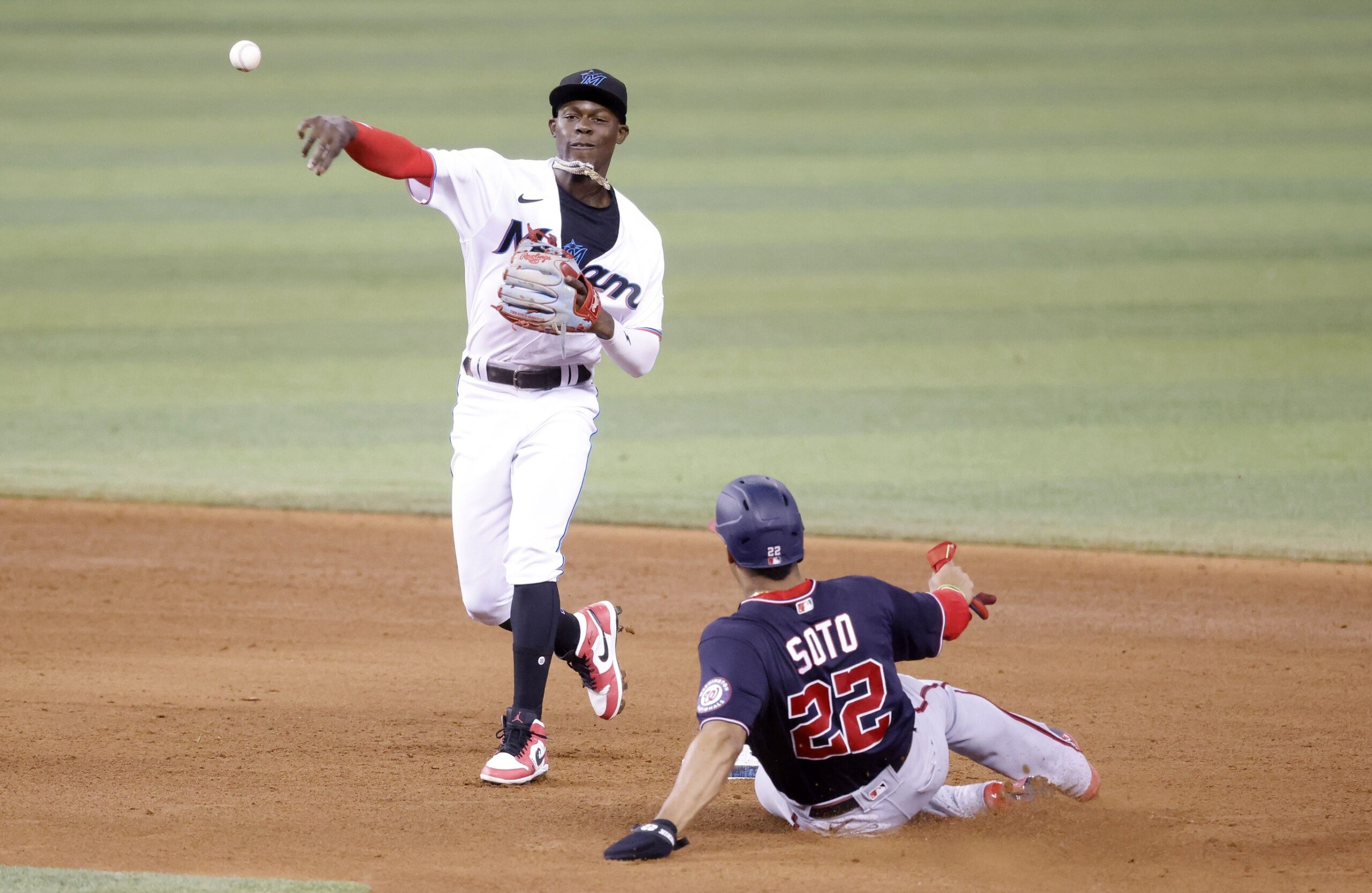
An Epic Prospect-for-Prospect Swap
Acquired RHP Zac Gallen from Marlins for INF Jazz Chisholm
In one of the more fascinating trades of the last decade, the D-backs traded arguably their best prospect in Chisholm in exchange for a budding starting pitcher in Gallen. Did I mention Hazen likes young, controllable starting pitching?
Despite a down year in 2021, Gallen still owns an impressive 3.57 ERA, 1.23 WHIP, 27.5 percent strikeout rate and 9.2 percent walk rate in 43 starts with the D-backs. At age 26, Gallen is under team control for four more seasons.
Chisholm, meanwhile, has shown flashes of being one of the most exciting young shortstops in the game for Miami. In 124 games in 2021, Chisholm slashed .248/.303/.425 with 18 homers, 53 RBIs and 23 stolen bases. Not bad for a 23-year-old.
Neither side is a clear winner, but given the D-backs’ farm depth at shortstop and need for pitching, it made sense for them.
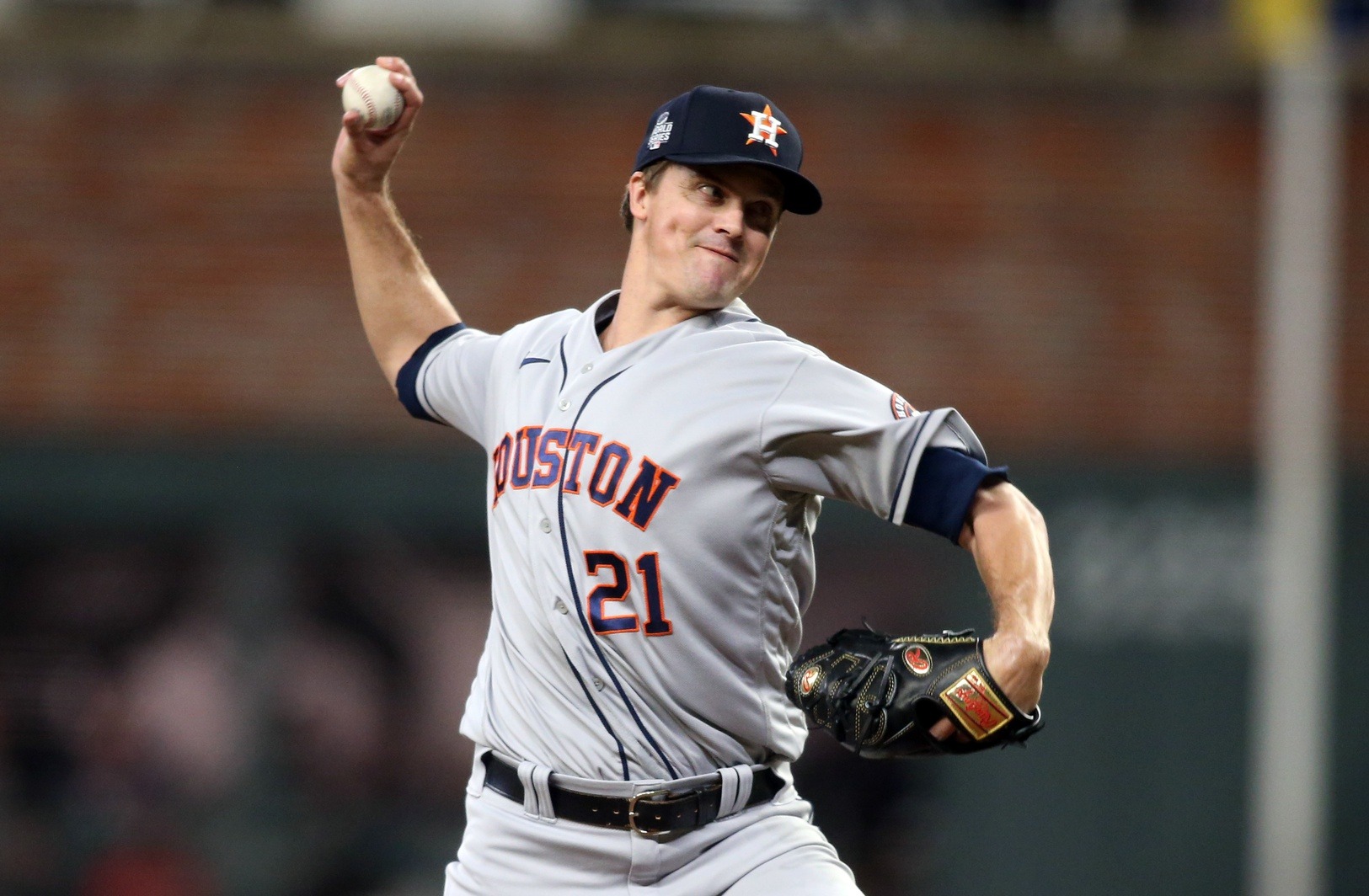
The Greinke Deal
Acquired RHP Corbin Martin, RHP J.B. Bukauskas, 1B Seth Beer, INF Joshua Rojas from Astros in exchange for RHP Zack Greinke and cash
After acquiring Gallen at the 2019 trade deadline, the D-backs appeared to be all in on chasing a Wild Card spot. Then they dealt their ace starting pitcher about three hours later.
While not quite what he was in Arizona, Greinke more than held his own in 52 starts with the Astros over three seasons, posting a 3.89 ERA, 1.14 WHIP, 19.9 percent strikeout rate and a 4.4 percent walk rate. The D-backs saved roughly $50 million in the deal.
While Hazen and company were unable to pry away top Astros prospects Forrest Whitley or Kyle Tucker, they did get arguably the next best three prospects in the system in Martin, Bukauskas and Beer. Unfortunately, none of the three have made a significant impact for the major league team yet.
After undergoing Tommy John surgery in 2019 and suffering a setback in 2020, Martin didn’t make his D-backs debut until 2021. In five appearances, Martin struggled to the tune of a 10.69 ERA and more walks than strikeouts. Perhaps a reunion with his former pitching coach Brent Strom will help him get back on track.
Bukauskas also struggled immediately upon his arrival to the majors. In 21 appearances in 2021, Bukauskas had an unsightly 7.79 ERA and 1.79 WHIP in 17.1 innings. Given the filth of his fastball/slider combo, there’s still good reason to believe Bukauskas could play a significant role in the bullpen in the future.
Unlike Martin and Bukauskas, Beer entered the league with an exclamation point, homering in his first major league at-bat. Unfortunately, he needed season-ending shoulder surgery three days later. Expect him to be back in 2022, likely serving as designated hitter should the new collective bargaining agreement bring it to the National League.
So far, the only tangible return for the D-backs has come from Rojas. After struggling in 2019 and 2020, Rojas was arguably the team’s most consistent position player in 2021, batting .264/.341/.411 with 11 homers and 44 RBIs and logging time at five different positions.
While Rojas still has room to improve, his hard-hit rate (percentage of batted balls with an exit velocity of 95 MPH or higher) in 2021 was just 31.1 percent, which ranks in the bottom nine percent of the league. Combine that with an above-average strikeout rate, and it’s easy to foresee his numbers regressing in 2022.
Nonetheless, Rojas still managed 2.0 fWAR in 2021 and his ability to play adequate defense at five positions makes him valuable. The D-backs have Rojas under contract for five more seasons.
At this point this trade doesn’t have a clear winner. The Astros have certainly gotten more value to date, but that was expected. There’s plenty of time for this to turn in the D-backs’ favor, even if one or more of the players they received don’t pan out.
At the same time, it’s also fair to wonder if the D-backs could’ve made the playoffs in 2019 had they held onto Greinke. They only finished four games out.
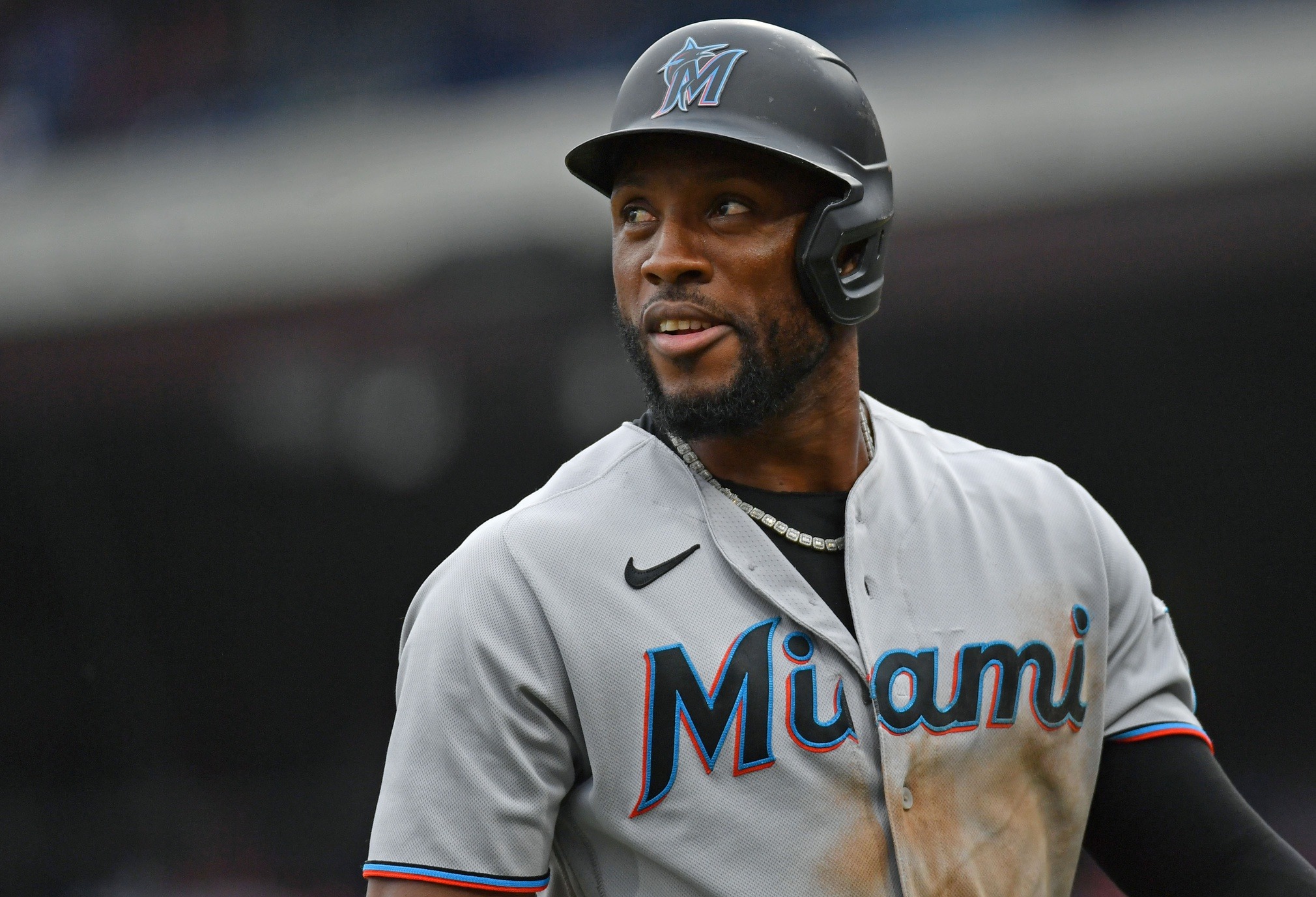
The Marte Partay
Acquired OF Starling Marte from Pirates for INF Liover Peguero and RHP Brennan Malone
Despite moving on from both Goldschmidt and Greinke, the D-backs won an impressive 85 games in 2019. Hazen pushed his chips in again, acquiring Starling Marte from the Pirates in exchange for two highly-touted prospects in Peguero and Malone. Marte had two years of team control remaining.
Ultimately, Marte played just 33 games in a Diamondbacks uniform, but he was quite good, slashing .311/.384/.443. Rampant underperformance elsewhere on the roster led Hazen to deal him at the trade deadline.
Meanwhile, MLB Pipeline pegs Peguero and Malone as the fifth and 21st best prospects in the Pirates’ system, respectively. Neither has played above Single-A yet, so it remains to be seen how they perform in the big leagues.
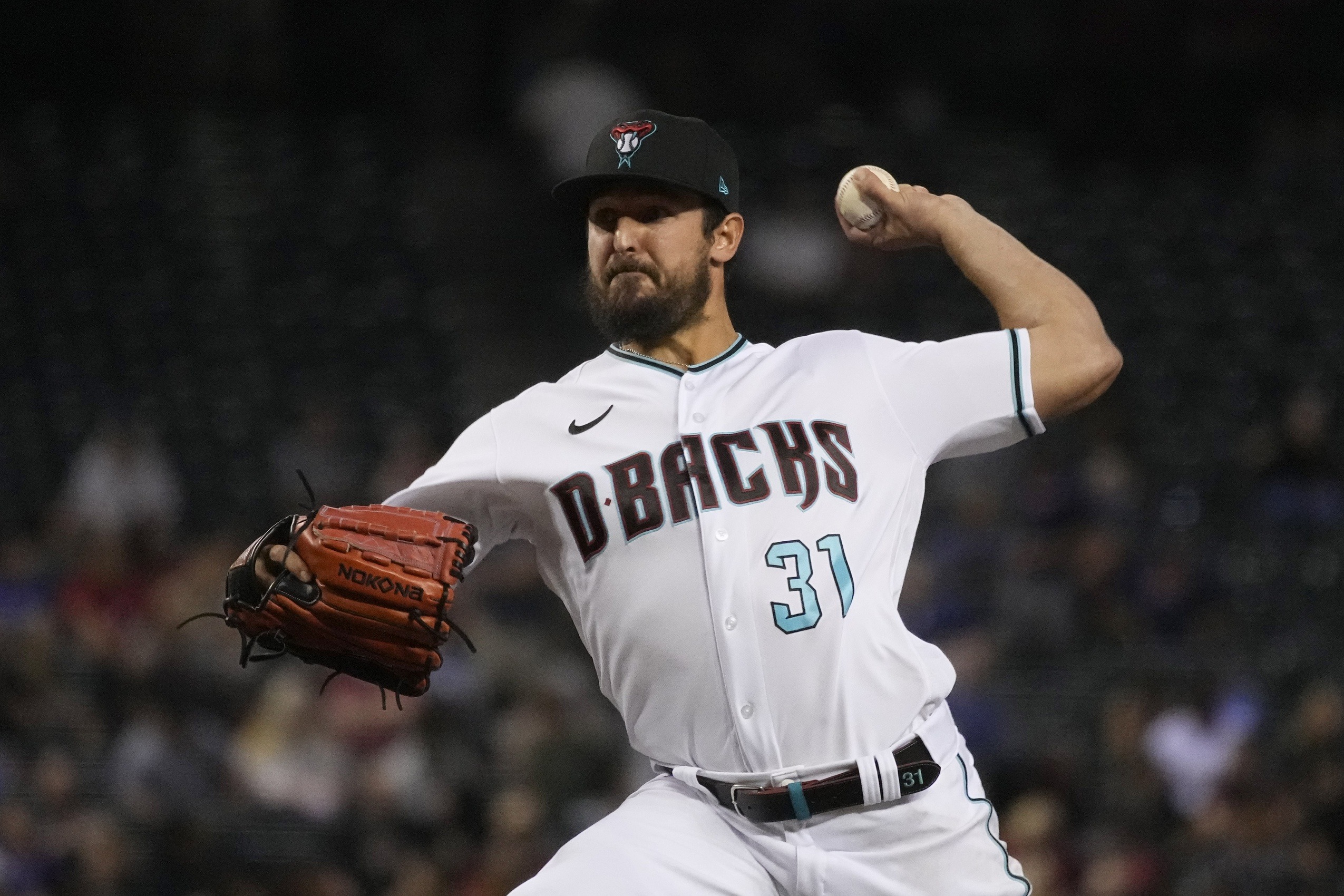
The Fire Sale
Acquired LHP Caleb Smith, RHP Humberto Meija and LHP Julio Frias from Marlins in exchange for OF Starling Marte
Facing severe revenue losses due to the pandemic, the D-backs reportedly didn’t plan to pick up Marte’s $12.5 million team option for 2021. That led Hazen to trade Marte the same year he acquired him.
It’s not hard to see why Smith was an attractive asset. The D-backs didn’t have any effective left-handed starting pitchers at the time, and Smith is controllable through 2023.
Unfortunately, Smith has struggled in the rotation, logging a 6.95 ERA in 13 starts in 2021 compared to a 2.70 ERA in the bullpen. While there’s something to be said for an effective left-handed reliever, that’s certainly not what the D-backs had in mind when they acquired him.
Meija struggled in five starts with the D-backs last year, posting a 7.25 ERA. He figures to be an up-and-down guy moving forward. Frias, meanwhile, pitched 11 games in relief with Single-A Hillsboro in 2021. He posted a respectable 4.60 ERA, but walked more than a batter per inning.
Marte was just okay for the remainder of 2020, but he followed that with a 5.5 fWAR season in 2021 with the Marlins and Athletics. By that metric, he was the ninth most valuable position player in baseball.
This deal is undoubtedly Hazen’s biggest blunder.
Before we heap all the blame on him, though, it’s important to remember the context of the trade. Like most other Hazen moves that have drawn criticism, there’s a case to be made that a lack of financial resources had him cornered. If the D-backs were willing to pick up Marte’s option—a no-brainer for most teams—there would have been no need to deal Marte for pennies on the dollar. Although to a lesser extent, a similar case could be made for the Greinke and Goldschmidt trades.
It’s difficult to maximize value when dealing from a place of financial need. Unfortunately, as long as the D-backs remain in the bottom tier of spenders, Hazen’s plight may never change.
Beane’s words from “Moneyball” ring true again: “It’s an unfair game.”
Follow Jesse Friedman on Twitter
Get Arizona's Best Sports Content In Your Inbox!Become a smarter Arizona sports fan with the latest game recaps, analysis and exclusive content from PHNX's writers and podcasters!
Just drop your email below!
Comments
Share your thoughts
Join the conversation



